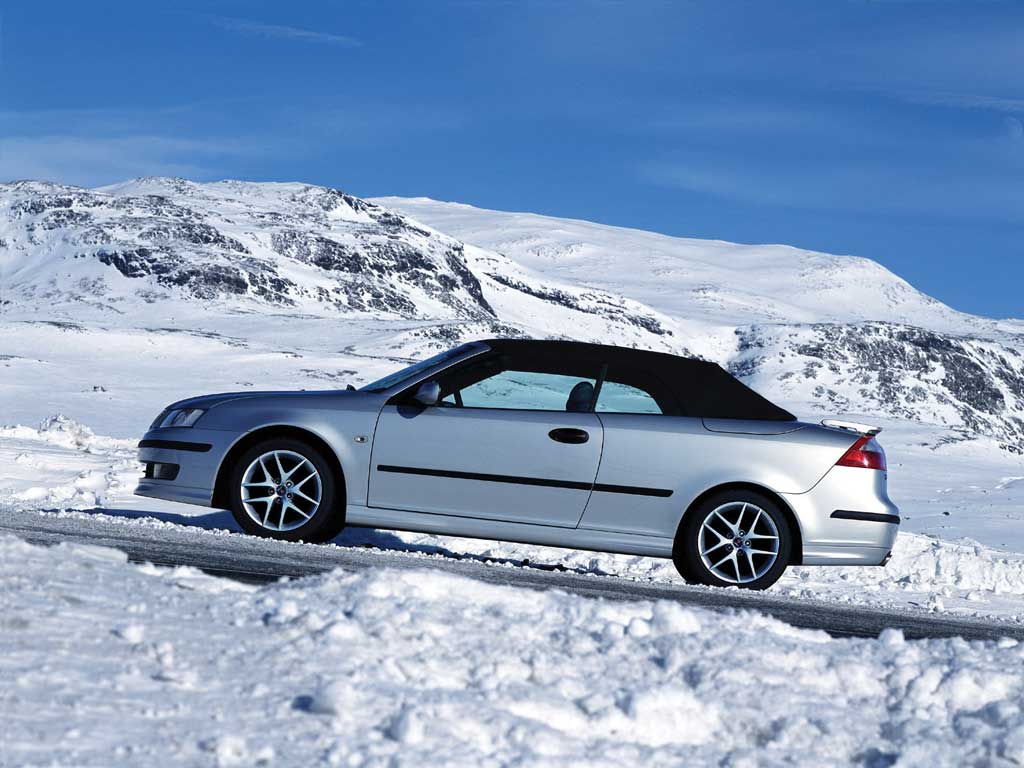
Peering down into murky blackness in sub-zero temperatures, it was hard to believe that anything could be living there, deep beneath my thickly-booted feet. I was gazing into a hole cut in the unforgiving ice of a frozen lake in Swedish Lapland, watching for any sign of a twitch on the fishing line I had just cast into it. Suddenly there was a tug, I yanked the line upwards, and out came a small fish. Success!
This activity was light relief at the end of a long day of exhaustingly test driving Saabs, on snow-packed roads through a frozen monochrome landscape, with only a brief few middling hours of daylight. It was also a fun highlight of what was for many years my favourite annual motoring writer activity: exploring the limits of winter car control in Scandinavia, north of the Arctic Circle.
It’s a very harsh driving environment. The ambient temperature can go below -30 degrees in mid-winter, cold enough to ice your eye lashes, and also to strip the skin off the palm of your hand if you were foolhardy enough to touch an outside door handle without the protection of a thick thermal glove. In times of cameras with film in them, the film reels became brittle and broke in the cold. Cars parked outside overnight had to be plugged into heater bollards to enable them to start in the morning. Heated car seats and steering wheels, now a popular luxury in vehicles sold in milder climes, were invented by Swedish car engineers, who were inspired by their extreme local winter conditions.
Lakes that are home to summer boats become winter driving sites, and an entertaining place to learn and hone driving skills in perilous conditions. It involves doing so in cars with icy grip achieved by tyres that are liberally equipped with dozens of metal studs set into their treads. In wintry Scandinavia, they are mandatory.
In early winter, though, care is needed to ensure that the ice is solid enough to safely bear the heavy bulk of a car weighing as much as two tonnes. It needs to be at least a metre thick, and even when it is, you still need to be aware of parking cars too close together on the hard white surface of a frozen lake. On one such trip, a large boat was marooned in the ice for the remainder of winter, and which we bizarrely had to drive around, was a telling reminder of what the surface would revert to once spring arrived.
Driving on Arctic roads in mostly dark mid-winter brings its own special hazards, and it’s not just about slithery surfaces. Roaming reindeer can take your eyes off the road at crucial moments, and the occasional elk padding along through the snow is a hefty hazard. Elk are the largest road safety risk in Lapland, and beware of calling them moose, as a newspaper headline writer once did on a report I wrote about Lappish driving. It triggered a reader’s 12-page letter from a biology professor painstakingly explaining the differences between a Scandinavian elk and a North American moose!
One especially memorable trip involved an overnight stay at the Ice Hotel, notable for its bar that serves drinks in ice glasses on tables hewn from solid ice. Its bedrooms are like scenes out of the Disney blockbuster Frozen, adorned with ice sculptures towering above ice block beds and maintaining a constant overnight ambient temperature of -1 degrees. Sleep is achieved by wrapping up in thick layers of bedding over reindeer skins.
Another time, my colleagues and I were relaxing over dinner after a particularly long day at the wheel on surfaces better suited to skating rinks than road travel. We were cheerfully remarking that nothing would drag us back out into the cold until the next morning. But this was in Riksgrandsen, Europe’s northern-most ski resort, and as the waitress was serving our food, she casually mentioned: “I don’t know whether anyone is interested, but the Northern Lights are outside.” Instantly the restaurant emptied, and dinner cooled while we watched the awesome light show that is the aurora borealis.
Then there was the evening seared into memory when Volvo hosted a post-driving supper in a huge tepee, warmed by a central blazing log fire directly beneath a tent-top hole for the smoke to exit. We had our food on wooden plates and were encouraged to throw them into the fire after use. Oops. Somebody suddenly noticed that the canvas around the smoke hole had caught alight and was glowing. Within minutes, as we hurriedly evacuated, the flames rapidly spread downwards and the whole tepee was on fire. Ice driving trips are always exciting, but this was a bit more drama than any of us really expected!
© Motorworld Media 2023
Registered Office: 4 Capricorn Centre, Cranes Farm Road, Basildon, Essex. SS14 3JJ
Company Number: 8818356
Website designed by Steve Dawson